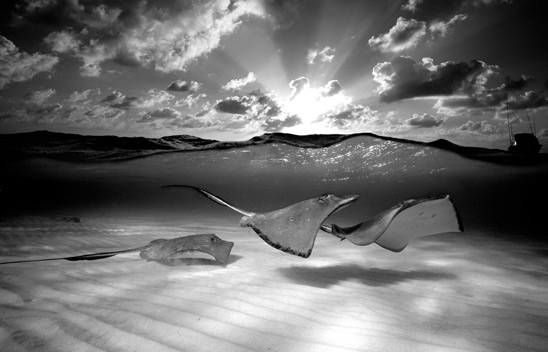~ Archive for ionStories ~
Invisible Blogs
ø
In Ersilia, to establish the relationships that sustain the city’s life, the inhabitants stretch strings from the corners of the houses, white or black or gray or black-and-white according to whether they mark a relationdhip of blood, of trade, authority, agency. When the strings become so numerous that you can no longer pass among them, the inhabitants leave: the houses are dismantled; only the strings and their supports remain.
From a mountainside, camping with their household goods, Ersilia’s refugees look at the labyrinth of taut strings and poles that rise in the plain. That is the city of Ersilia still, and they are nothing.
They rebuild Ersilia elsewhere. They weave a similar pattern of strings which they would like to be more complex and at the same time more regular than the other. Then they abandon it and take themselves and their houses still farther away.
Thus, when traveling in the territory of Ersilia, you come upon the ruins of abandoned cities, without the walls which do not last, without the bones of the dead which the wind rolls away: spiderwebs of intricate relationships seeking a form.
Por desgracia, no tengo mi copia de Invisible Cities, y no parece estar ni en Limewire ni en eMule. Pero se est
Mark Rosen’s “Nine-tenths of the Law”
ø
Habermas’s study of the public sphere in connection with the dual emergence of copyright and the public domain in the eighteenth century also describes the structural transformation of the public sphere, the process that he describes as its “hollowing out” in the context of advanced capitalism in the nineteenth and twentieth centuries.44 Just as the early history of copyright is embedded in the formation of the public sphere, so the later history is embedded in the structural transformation of the public sphere. Any detailed discussion of that history is beyond the scope of this discussion, but it is apparent that the eighteenth century debates did not produce a legal discourse of public rights strong enough to balance the discourse of property rights.45 Perhaps the single [*pg 87]most important moment in the establishment of the public domain was, as this article suggests, the foundational case of Donaldson in 1774, which confirmed that the term of protection was limited. But, at the same time, Donaldson appears in hindsight to have been, so far as the development of a discourse of the public domain is concerned, something of a rhetorical disaster. Lord Camden’s famous speech to the House of Lords may have influenced the lords in their decision, but it also probably did long-term damage to the cause of the public domain.
At the present moment, as we attempt to argue for the value of the public domain, we need to understand that we are fashioning a rhetoric as well as a politics of the public domain. Casting a defense of the public domain on the model of the environmental movement seems promising. As Boyle notes, before the movement, the environment was in effect invisible.46 Likewise, one element of the task today is to make the public domain visible — to develop an affirmative discourse that will make it a positive and prominent part of the social and cultural landscape. Part of the rhetorical strength of such an environmental model is that it draws on a metaphor that is already deeply embedded in copyright thought. Rhetoric is crucial. And the English copyright debates of the eighteenth century illuminate both the difficulties and the importance of the rhetorical task.
Sacado de ac
